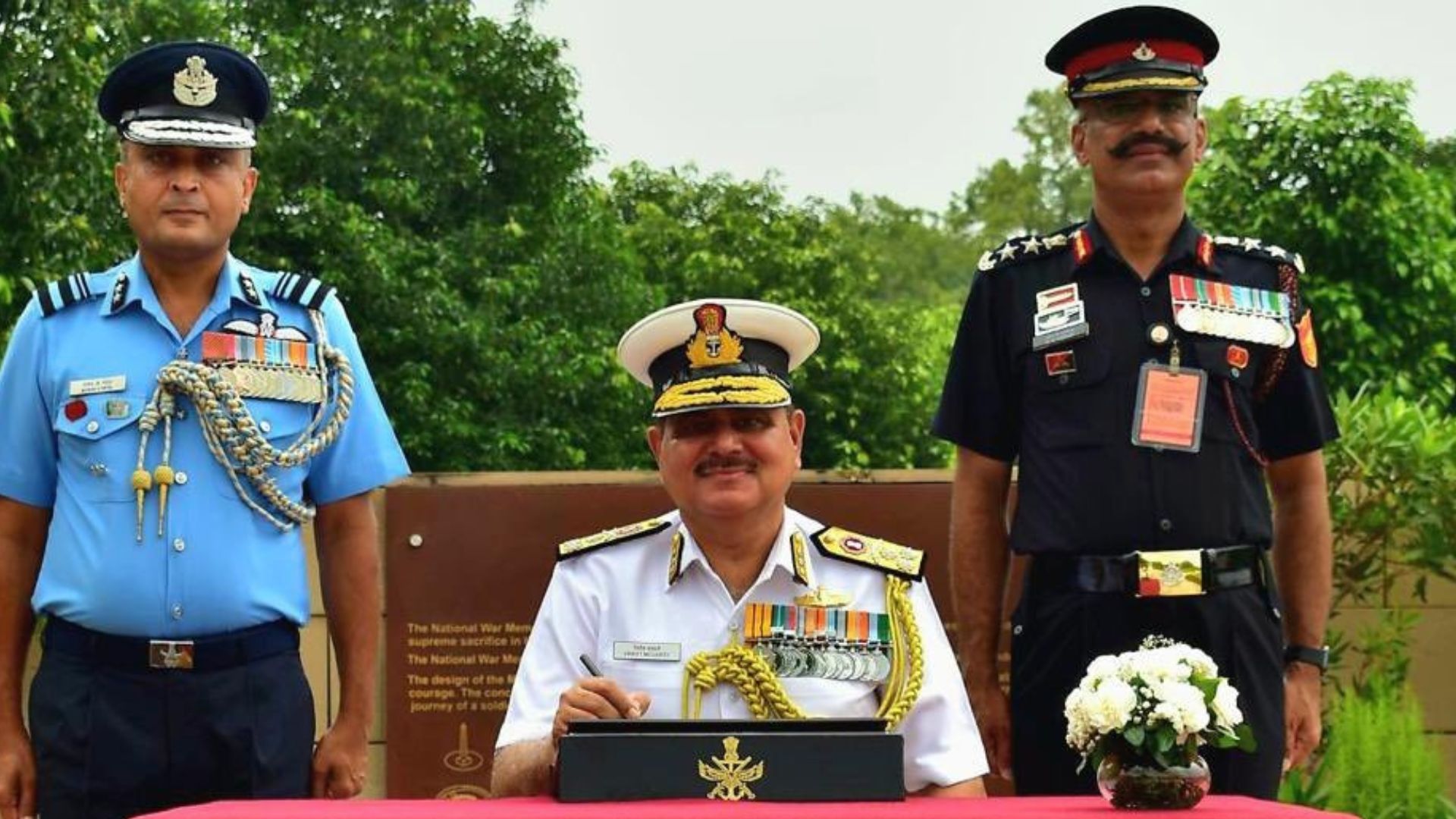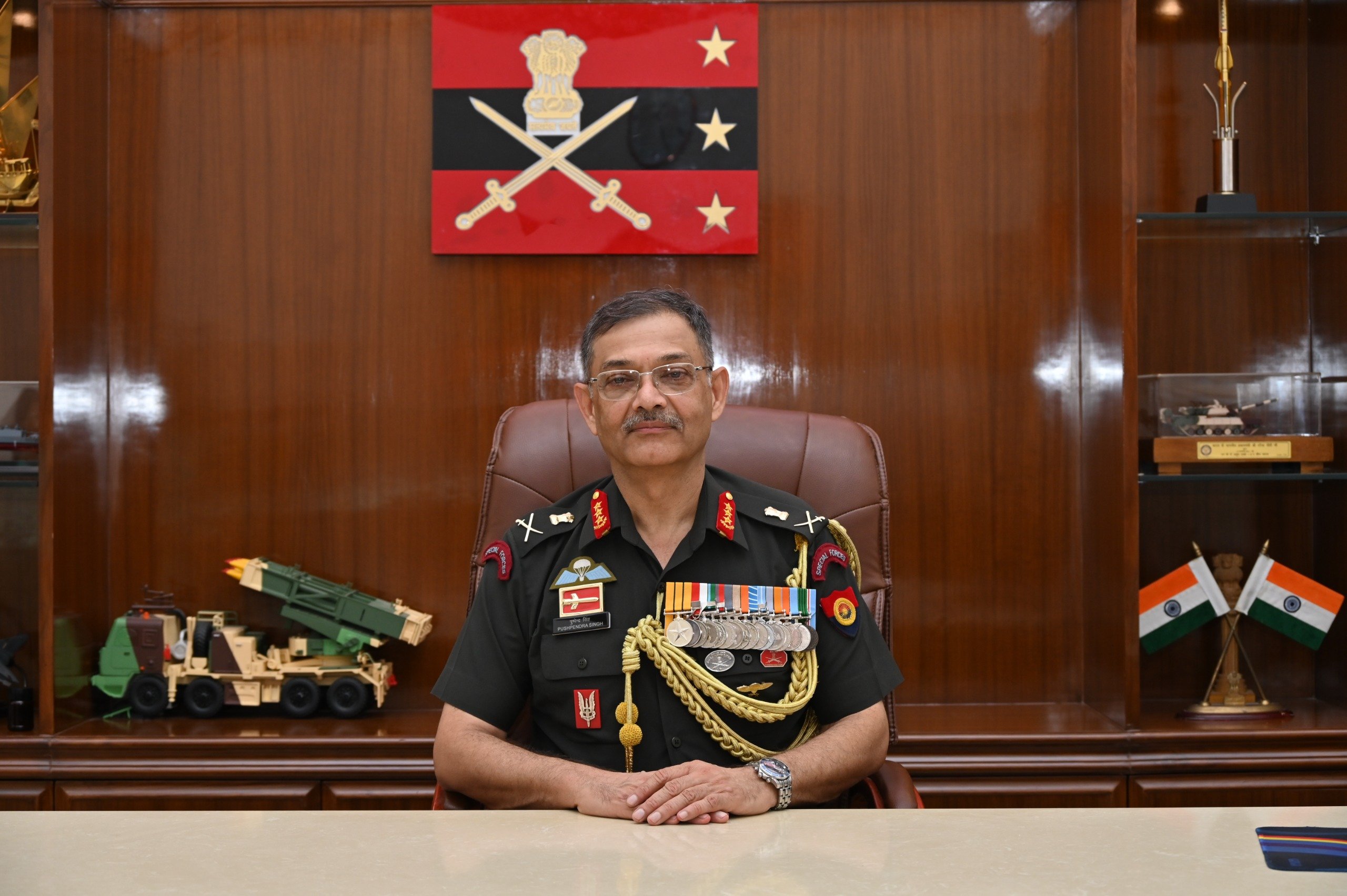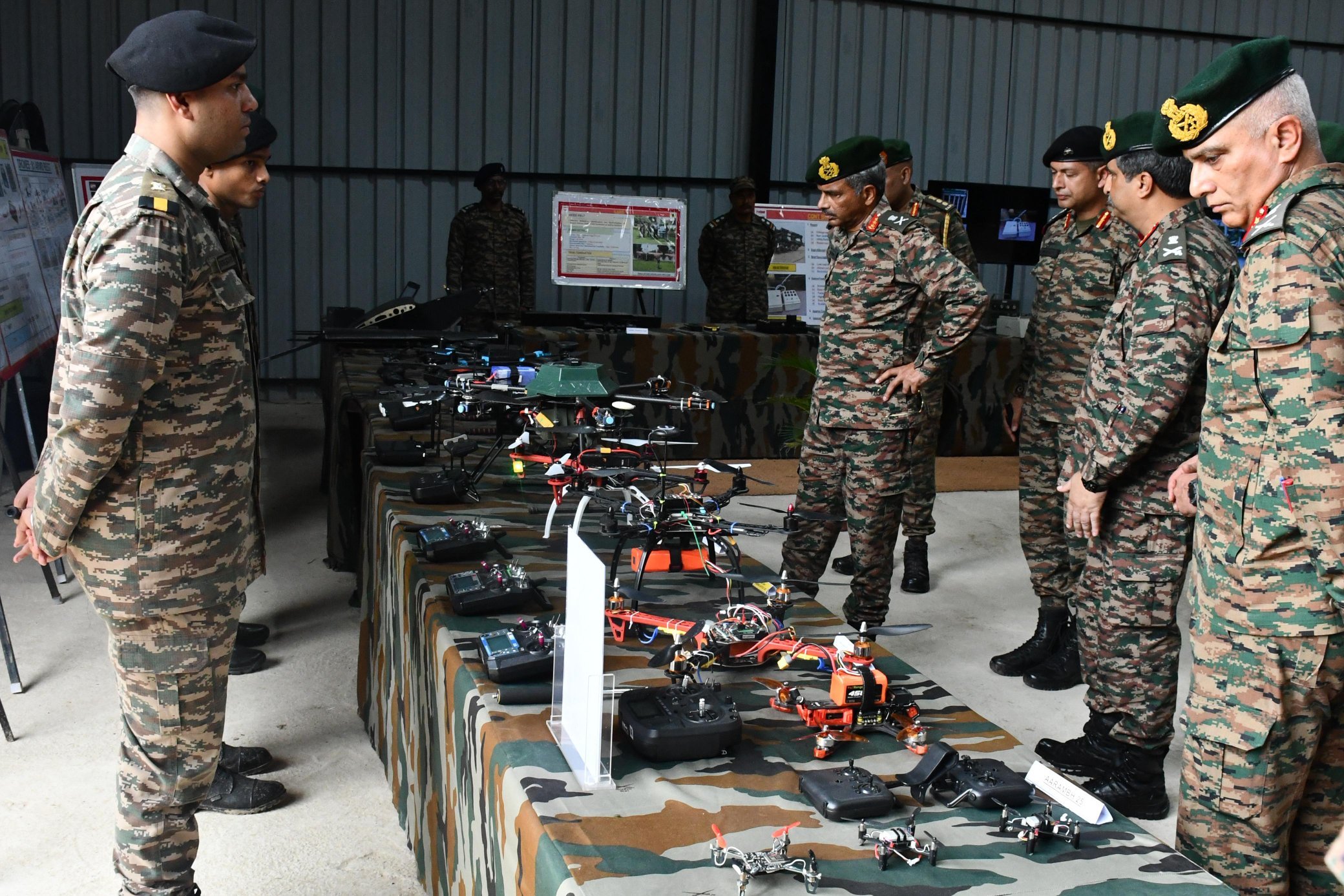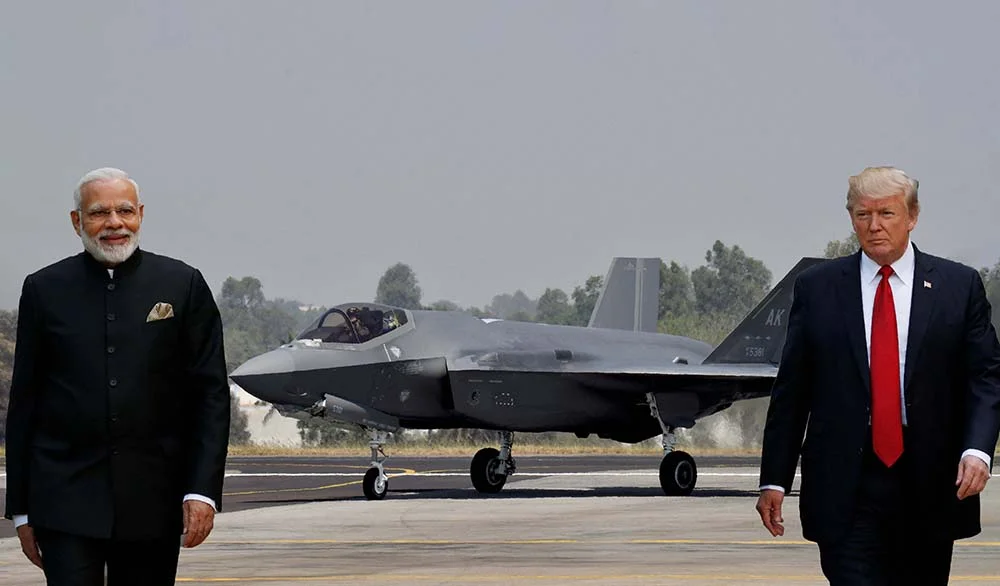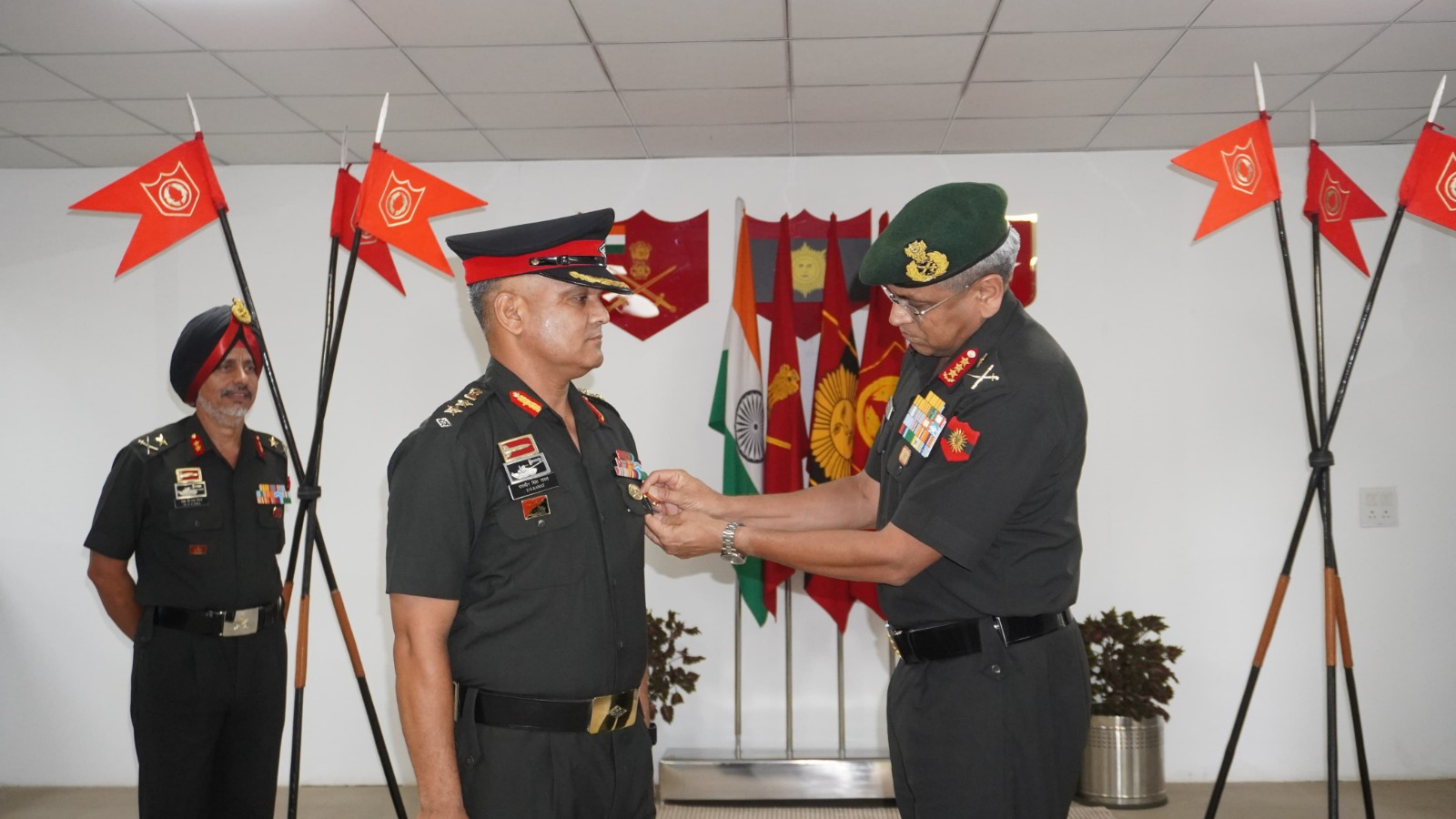Vice Admiral Vineet McCarty Takes Charge as Deputy Chief of Integrated Defence Staff (PP & FD)
Vice Admiral Vineet McCarty has officially assumed the post of Deputy Chief of Integrated Defence Staff (Policy Planning & Force…
Lieutenant General Pushpendra Singh Takes Charge as Vice Chief of Army Staff
Lieutenant General Pushpendra Singh assumed the post of Vice Chief of the Army Staff (VCOAS) today, taking over from Lt…
Indian Army Highlights Tech-Driven Warfare Capabilities in Brigade Review
The Indian Army reinforced its focus on technological transformation and battlefield innovation during a high-level review led by Lieutenant General…
Amitabh Bachchan Calls Indian Armed Forces His Pride After Indian Navy Warship Visit
Bollywood legend Amitabh Bachchan expressed deep admiration and national pride after spending an entire day aboard an Indian Navy warship.…
India Reportedly Declines U.S. Offer to Buy F-35 Jets
India has informed the United States that it is not interested in purchasing the F-35 stealth fighter jets, even as…
Lt Gen Anindya Sengupta Visits Uttarakhand Sub Area to Boost Operational Readiness and Veteran Welfare
Lieutenant General Anindya Sengupta, General Officer Commanding-in-Chief of the Indian Army’s Central Command, conducted a high-level visit to the Headquarters…

